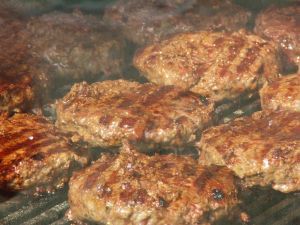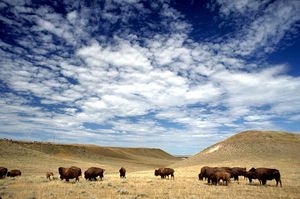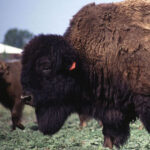What if I told you there was a healthier and tastier alternative to beef? What if I told you that tasty alternative was buffalo meat? Would you cringe at the thought of eating it? Or would you be curious enough to try it? This article details the health benefits of buffalo meat, where to buy buffalo meat, and why you should ditch beef altogether.
My first experience with buffalo meat (also known as bison meat) came as a result of my interest in the Eat Clean Diet. The Eat Clean Diet is not so much a diet as it is a lifestyle. It’s a practice of feeding yourself foods that are as close to their nutritional state as possible. The lifestyle promotes eating whole foods and denotes the consumption of preservative laden, chemically modified foods. (Think potato chips and sugary cereals.) As I learned more about this lifestyle, one food source kept popping up in my research; buffalo meat.
I will be honest ; I was at first a little apprehensive of trying buffalo. Tosca Reno, the author of the Eat Clean Diet cookbooks incorporated this meat in many of her recipes. Almost excitedly, she claimed the health benefits of bison were numerous. For me, a fitness enthusiast and novice bodybuilder, I was intrigued. I was especially interested in buffalo’s protein content. Protein is an essential element in muscle building. Buffalo has approximately 30 grams of protein per 100 gram serving. Beef also has the same protein makeup, but beef has 10 grams of fat per a 100 gram serving. Compare that with buffalo’s measly 2.5 grams of fat and you’ve got yourself a winner in buffalo. As for calories, buffalo has 143 and beef has 219 per serving. Buffalo is still the winner.
Another health benefit of buffalo is the fact that all meat sold in the US has to be from 100% grass fed, free ranging bison. Grass fed meat is higher in omega 3 fatty acids. These fatty acids are beneficial to heart and brain health. Studies have shown that people whose diets are rich in omega 3’s tend to have lower blood pressure levels. And unlike beef, buffalos are not injected with antibiotics and growth hormones, which results in a richer, sweeter flavor. The absence of growth hormones and antibiotics also promotes higher levels of another fatty acid – CLA (conjugated linoleic acid). CLA, in numerous studies, has been found to promote weight management in adults.
Buffalo meat tastes better than beef in my opinion. The taste is very similar to beef, but it is sweeter and more tender. It is not gamey by any means. It is important to cook the meat correctly. Being that it is very low in fat, it is easy to overcook the meat. Overcooking can lead to the meat being dried out and tough (i.e. hard to chew). It is advised to cook the meat slowly at a low temperature.
There are many recipes available online. The following recipe is from the Eat Clean Diet series and is a perfect starter recipe for anyone new to buffalo!
BISON BURGERS
Ingredients
• 1 Tbsp / 15 ml olive or safflower oil
• 3/4 cup / 180 ml finely chopped onion
• 2 egg whites
• 1/4 cup / 60 ml oat bran or oatmeal ground in a coffee grinder
• 1/4 cup / 60 ml cooked, mashed sweet potato
• 1 Tbsp / 15 ml molasses
• 1 tsp / 5 ml crumbled, dried oregano
• 1/2 tsp / 2 1/2 ml sea salt
• 1/2 tsp / 2 1/2 ml freshly ground black pepper
• 1 lb / 455 g ground bison
Preparation
- Heat olive oil over medium heat in a skillet. Cook the onion until soft and golden. Set aside.
- Meanwhile, in a large bowl, mix together egg whites, oat bran or oatmeal, sweet potato, molasses, oregano, sea salt and pepper.
- Stir in onions and bison. Mix the ingredients together with clean hands until just combined. This is real hands-on cooking. Take a handful of the meat and create a flat patty. You can get your family involved here too, so they can make patties that fit them. Just make sure they use clean hands.
- Grill the patties for 7-10 minutes on each side or until the burgers reach desired doneness.
- If you would like to store the patties in the freezer to use later, wrap the patties individually in parchment paper. They can be stored for up to one month in the freezer.
Calories: 143
Protein: 22 g
Carbs: 6 g
Dietary Fiber: 2.5 g
Fat: 2 g
Sat. Fat: 1 g
Sodium: 50 mg
Cholesterol: 80 mgRecipe from www.eatcleandiet.com





